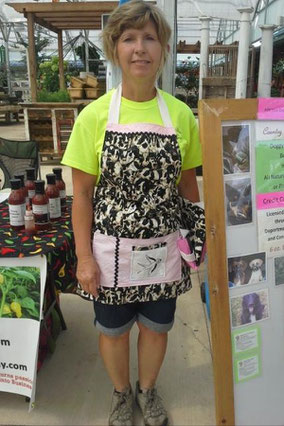A Day in the Life of a Market Vendor

Main Street mom and pops shops have taken a big hit in the past few decades. There is no single reason but, rather, several significant changes that impacted Small Town America. The development of Interstate highways paved over farmland and rerouted traffic away from Main Street. Homes became bigger and bigger, making way for storage of bulk purchases, which created a (perceived) need for warehouse and big box stores. Bulk and mass produced goods cost less and, quite frankly, we got what we paid for. These cultural shifts probably nurtured many psycho-social changes making it much easier for us to disconnect from our product sources, but I won't go into that here since, ultimately, I want to talk about farmers' markets.
One of the most disconcerting resulting issues is consumers (you and me) are often far removed from the processes that bring our goods to market, and we no longer associate a person with the food we eat, the clothes we wear, the flowers we grow in our gardens. Not only do we not associate a name or face with the things we buy, most of us don't even think about it.
There's this new movement happening across the country called “agritoursim.” Here in the Shenandoah Valley, we call it . . . Life.

I strongly believe that farmers' markets are one way we can take back our community, restore Mom & Pop's livelihood (and now many of my friends are Mom & Pop!), and, once again, put a name and face with the products we take home. It is a way - a simple and fun way - to teach our children and grandchildren where food and other goods come from and enables all of us to make educated, healthy product choices while connecting with community on a more personal level even if for just a few minutes each week. We've all heard the drill. Buy fresh. Buy local. It is good for our economy, our social and business networks, our communities, and our physical health. It's good for you. It's good for me. It's true.
Consumers have been told for so long that fresh foods and handcrafted goods cost more than mass produced foods and goods, but that is often not the case, especially in rural areas. Not only are many locally produced products of comparable or lower cost, the value for your dollar spent
may be significantly higher.
But it isn't as easy to learn about the producers of your stuff now that the local mercantile or general store is gone. After all, the South Street Barn Market is only open a short five hours, one day each week. We're going to fix that. Periodically, hopefully at least once each month, we will profile one of our vendors and show you A Day in the Life of [fill in the blank].
-
What is the typical workday for a [farmer, baker, gardener, artist, seamstress, craftsperson]?
-
Do vendors take vacations?
-
How are kids impacted by growing up in a family with entrepreneurial spirit?
-
How does a vendor determine how much product to have on hand and when?
If you have a question you'd like to ask a vendor, let me know. In the meantime, we look forward to seeing you at the South Street Barn Market.
- Claire Hollady






